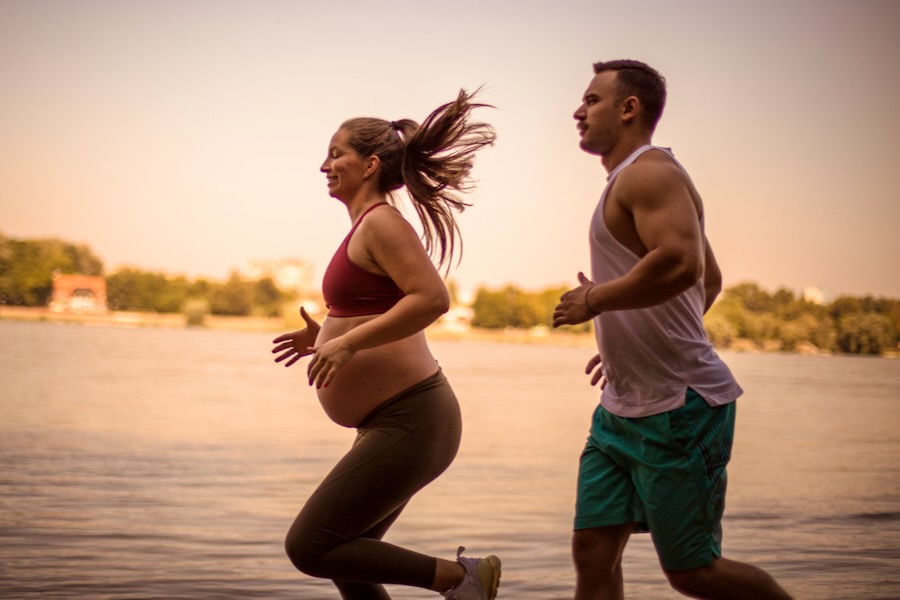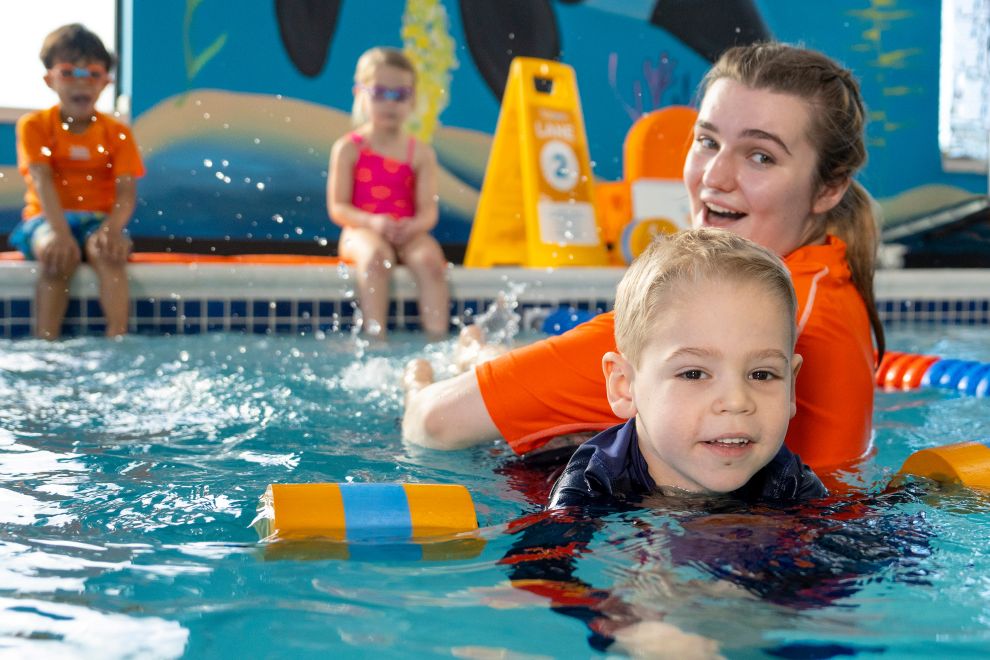Dr. Jennie Draper, OB/GYN at Virginia Physicians for Women, shares insights from her interview with Triathlete Magazine on how pregnancy, childbirth, and breastfeeding affect an athlete’s body and how to adjust your training accordingly.

An OB/GYN and triathlete herself, Dr. Jennie Draper was recently interviewed by Triathlete Magazine for an article called “What to Expect (as a Triathlete) When Expecting.” When it comes to exercising while pregnant or breastfeeding, especially for those who are doing more intense training, it’s not just about protecting your baby but also about protecting yourself from injury and getting the nutrients you need as your body grows and changes. Here are some insights we learned from Dr. Draper.
Endurance training is great preparation for pregnancy and labor.
Dr. Draper shared that racing while pregnant demands physical and mental fortitude. “After all, pregnancy, labor, and delivery is an endurance sport all its own; the added disciplines of breastfeeding and sleep deprivation after the baby arrives makes this joyous time of life an epic endurance pentathlon of sorts.”
Endurance training prior to pregnancy helps you throughout your pregnancy, especially during the third trimester and labor and delivery, “because these processes demand so much endurance, stamina, and strength,” Draper says.
“Labor itself is a physical feat that you don’t get to practice for, and you have to use your pelvic floor muscles in a whole new way. It’s just really empowering to watch.” Dr. Draper compares pushing during labor to the final 6 miles of an Ironman: “you know the finish is close, but you’re tired and you’re not always certain you can make that final push to the tape.”
There’s also a psychological component to pregnancy and labor that trained athletes are a little more prepared for than the average obstetric patient. They are used to grueling through an uncomfortable experience to make it to the finish.

A changing body requires training adjustments during and after pregnancy.
Starting at conception, hormonal changes in a pregnant athlete’s body can cause fatigue and nausea. By the third trimester, hormones cause your hip joints and pelvis to become looser to prepare for giving birth. This is a crucial time to pay attention to your body and “avoid overly high-impact activities by that point” to help prevent injuries, Draper says.
Added weight throughout pregnancy can shift your center of gravity, making running awkward and slowing you down. It can also put more strain on your hips, knees, and ankles, as well as your heart and lungs.
When it comes to biking, the growing bump will require not just physical adjustments but also equipment adjustments. “You’re probably going to need to elevate your handlebars and make more frequent adjustments to how your seat is on the bike,” Draper explains.
Swimming can actually be a great way to exercise while pregnant “because you get to feel weightless and the water can help with the swelling that comes.” Dr. Draper recommends doing away with flip turns as you approach the third trimester to avoid dizziness and a drop in blood pressure.
It’s also extremely important for pregnant athletes to get plenty of rest and plenty of calories – you’ll likely need an extra 300-500 per day to support fetal development. Breastfeeding requires even more of an energy output than pregnancy.
Training levels will vary from person to person and pregnancy to pregnancy.
When it comes to the level of training, Dr. Draper says “our general rule is if your body is already accustomed to a certain level of training, then you can absolutely continue that as long as your pregnancy is going smoothly.” However, she clarifies that high intensity training should be “super individualized depending on each person’s scenario.”
“As long as it’s a normal, healthy pregnancy, you don’t have to cut any activity out unless you’re at risk for falling or hitting your abdomen, particularly in the second half of pregnancy,”
Dr. Draper recommends listening to your body and staying adaptable, adjusting your training volume, intensity, and expectations as your comfort level changes. Each pregnancy is different, from person to person and from your first to your last. Some are able to run throughout their pregnancy, others have to stop by the second trimester. Some are surprised that what they were able to do in one pregnancy differs from what they can do during their next pregnancy.
Adjusting expectations is key. “You have to go with the flow,” Draper says. “What you expect in terms of performance just may not match up with reality.”
It’s best to stay in communication with your provider and care team as your pregnancy progresses. Dr. Draper also recommends seeking out “a physician who really understands and supports athletic performance.” You’ll need to stop any exercise and get medical advice from your care team if you develop any complications during pregnancy such as placenta previa, elevated blood pressure disorder, or preterm labor.
How long until you can begin postpartum exercise and training.
If you’re wondering how soon you can begin postpartum exercise and training, Dr. Draper has some specific guidance:
Postpartum individuals should wait at least 6 weeks to go swimming to prevent infection.
As a general guideline, you should wait 12 weeks for your body to heal before you start running. You’ll want to have your pelvic floor evaluated and make sure you’re not having any urinary incontinence.
If you decide to breastfeed, make sure you don’t resume too much exercise too quickly or you may see your milk output decline. “You really have to make sure you’re getting enough fat and calories to support nursing,” says Dr. Draper. She recommends talking to your care team about how to get the amount of nutrients your body needs.
Be kind to yourself.
Ultimately, Dr. Draper emphasizes how beneficial it is to get exercise while pregnant. “Maintaining whatever regimen you can for as long as you can will certainly help boost your mood during pregnancy and keep you fit for the event of labor.”
She also recommends being kind to yourself and avoiding trying to do too much too long into your pregnancy–or too soon after. Your body goes through so many changes during this phase of life. It’s best to keep your expectations loose and adjust your training accordingly. “You risk injury if you resume too soon,” Dr. Draper says. “Particularly if you’re breastfeeding, be patient with that process so you don’t set yourself up for an injury that puts you further behind.”
Read the full article at triathlete.com: “What to Expect (as a Triathlete) When Expecting.”

Dr. Jennie Draper, OB/GYN at Virginia Physicians for Women, is an expert on women’s health, fitness and nutrition. Dr. Draper sees patients at VPFW’s Henrico Doctors’, St. Mary’s, and West Creek offices and delivers babies at Henrico Doctors’ Hospital and St. Mary’s Hospital.





